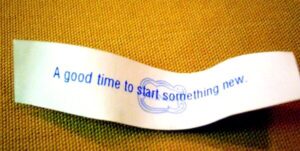
Old Dogs + New Tricks: Will HR Learn? #TChat Preview
This week, #TChat offers 3 ways to play! We marry old school with new tech, and hopefully advance workplace culture and practices for everyone

This week, #TChat offers 3 ways to play! We marry old school with new tech, and hopefully advance workplace culture and practices for everyone

Are employers unintentionally losing competitive steam by overlooking talent that lives at the margins? Could a more inclusive world of work boost innovation?

Don’t miss the hot ticket at this year’s HR Tech Conference, as #TChat goes live with experts at a very special Employee Engagement Roundtable. Join the conversation October 7!

What if we felt free to express emotions like anger, fear, depression and grief in the workplace? Could that kind of authenticity lead to better business results?

Social engagement is not a management overlay on a toxic culture. It’s not a Band-Aid, a work-around or a cure-all. But what DOES it take to be an effective social leader in today’s world of work?

Trust is essential to business success — and it’s a two-way street. How can leaders create a trust-based culture? A young entrepreneur weighs in

How are employers pushing the “gamification” envelope to improve hiring and management decisions? See highlights and collected resources from a week of playful #TChat events

How can companies retain their most innovative employees? And how can those smart minds succeed? It starts by creating value for others

Think you’re ready to quit your job and strike out on your own as an entrepreneur? There may be a better path to your professional goals…

Why and how should established businesses develop a culture of entrepreneurship? That’s the focus this week at #TChat events with Bob Burg…

Under what conditions do you perform best? If something is standing between you and your work “zone” it’s time for a work/life fit reality check…

Flexible work: The concept is decades old, but technology and cultural changes are making alternative schedules and locations more viable. Take a closer look with #TChat

Are new technologies emerging so rapidly that organizations can’t keep pace? What’s ahead in HR innovation and how should we prepare?

Is workplace technology evolving too quickly for organizations to absorb? How can we stay ahead of the curve without jeopardizing employee engagement?
In today’s world of work, why do men tend to be more highly engaged than women? What can organizations do to help women engage more fully?

Why is social learning suddenly such a hot business issue? Consider three fundamental facts…

Does talent acquisition seem like a vicious cycle at your company? For sustainable results, try an approach that integrates 3 elements

Do you see a talent tsunami ahead? What is your organization doing to protect your investment in employee morale and performance?

Research confirms that employees are suffering at the hands of poor managers — and business performance is right behind. How can companies turn this around?

The TalentCulture community is heading to Chicago — along with 18,000 HR professionals who are gathering to discuss the future world of work. Join in, as we work the floor at #SHRM13!

Customer and employee engagement are similar in many ways. Here’s how customer experience disconnects can inspire better employee communications…

How can organizations encourage collaboration? And why does it matter? The TalentCulture community opens up about open leadership…

What is an “open” leader — and why is that concept vital in the workplace? That’s our focus at #TChat forums this week, as we explore the intersection of management, learning and collaboration

Small-company culture can be highly attractive to top talent. So, what can large companies do level the playing field? Try these 5 steps…

How can organizations engage employees more constructively? Start with the basics — 3 essential ways to build stronger connections